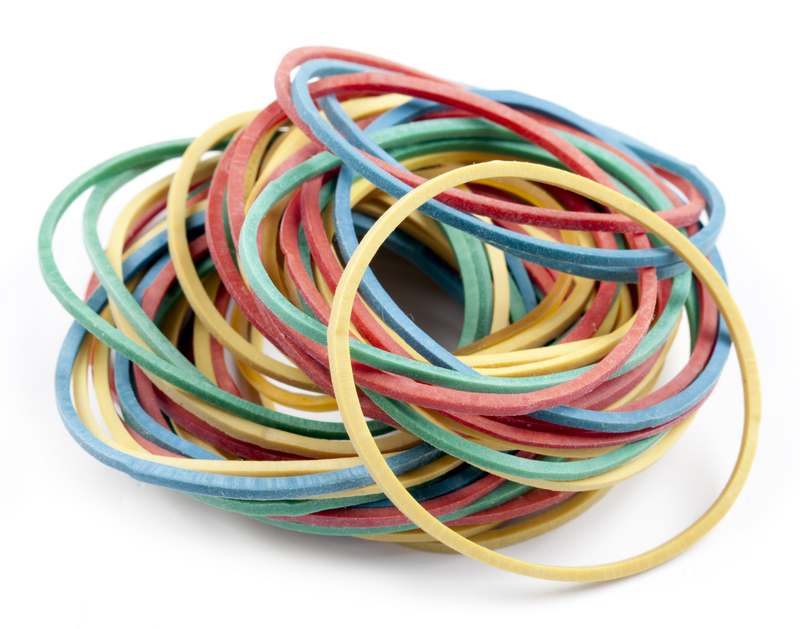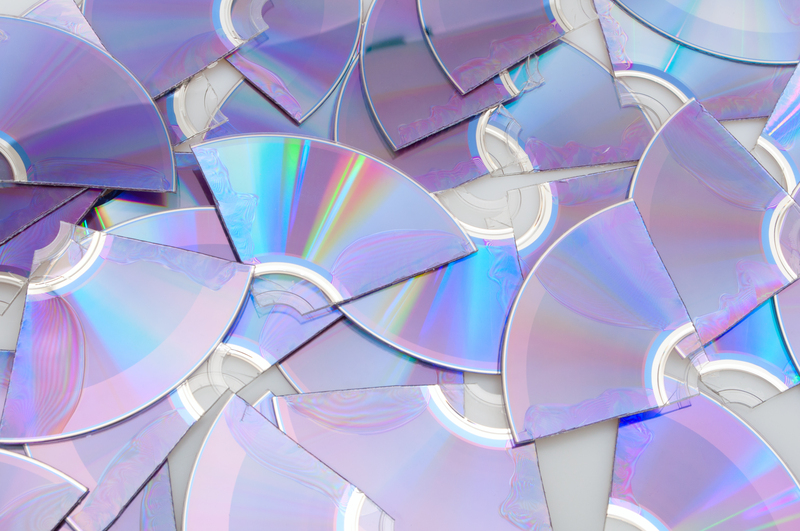Best Practices for Disposing of Your Aging Chargers
With the rapid pace of technological advancement, most of us end up with a drawer full of old, unused, or broken phone, laptop, or tablet chargers. While it may be tempting to simply throw these aging accessories into the trash, improper disposal can have negative impacts on the environment and may even be hazardous. This comprehensive guide explores the best practices for disposing of aging chargers, providing you with environmentally responsible and efficient methods to get rid of your old electronic accessories.
Why Proper Disposal of Old Chargers Is Important
Chargers, whether for your smartphone, tablet, or laptop, are considered a part of electronic waste (e-waste). The materials contained in chargers, such as plastics, metals, and sometimes hazardous chemicals, can generate significant environmental damage if carelessly discarded. Below are key reasons to adopt proper charger disposal practices:
- Environmental Protection: Chargers contain metals and plastics that do not degrade and can pollute soil and water if left in landfills.
- Resource Conservation: Recycling allows valuable materials like copper and aluminum to be reclaimed and reused, reducing the need for additional resource extraction.
- Legal Compliance: Some regions have strict rules around the disposal of e-waste, with penalties for non-compliance.
- Data Security: In rare cases, certain smart chargers with memory chips can store data. Safe disposal helps ensure your information remains private.
Understanding E-Waste and Its Impact
E-waste, including old chargers, is one of the fastest-growing waste streams worldwide. According to the Global E-Waste Monitor, the world generated approximately 53.6 million metric tonnes of e-waste in 2019, and only a fraction was recycled. When chargers end up in landfills, toxic elements like lead and mercury can leach into the environment, causing soil and water contamination.

How to Tell If Your Charger Needs Disposal
Before you dispose of your old chargers, make sure they are no longer functional or needed. Here's how to determine if it's time to let go:
- Physical Damage: Frayed wires, cracked casings, or exposed components signify a safety risk and require disposal.
- Performance Issues: Chargers that overheat, charge too slowly, or do not charge at all should be replaced.
- Compatibility: If you have upgraded your devices and no longer have any use for your old chargers, it's time to consider responsible disposal or reuse.
Options for Disposing of Aging Chargers Responsibly
There are several best methods for disposing of aging chargers. The right choice depends on the condition of the charger and your local resources. Here are the top environmentally-friendly disposal solutions:
1. Recycle at Certified E-Waste Centers
The most effective and eco-friendly method is to recycle your heater at an official e-waste collection point. Many cities offer dedicated drop-off sites or annual events for electronics recycling. These centers are equipped to safely handle and dismantle electronic items, ensuring harmful materials are disposed of properly.
- Find your local e-waste center: Search online for certified e-waste collection locations or check local government websites.
- Make sure to inquire about their handling of small electronic accessories like chargers, as some facilities only recycle larger items.
2. Utilize Retail Store Take-Back Programs
An increasing number of major retailers now offer electronic recycling programs. Stores like Best Buy, Staples, and others often have in-store collection bins specifically for cables and chargers. Some brands and manufacturers also have mail-in or drop-off take-back schemes. Recycling through these programs guarantees that your old chargers are processed by professionals.
- Visit retailer websites for details about accepted items and program availability.
- Ask electronics stores if they will take mismatched or non-brand chargers as well.
3. Donate Functional Chargers
If your aging charger is still operational and not too worn, consider donating it. Schools, non-profits, shelters, or community centers often need extra chargers for donated devices. Local libraries, charitable organizations, or online reuse networks like Freecycle or Buy Nothing groups can also connect you with people who may benefit from your used chargers.
- Ensure compatibility: Verify that your donated charger fits devices still in circulation.
- Clean before donating: Wipe down the charger for hygiene and visual appeal.
4. Repurpose or Upcycle Old Chargers
For those who enjoy DIY projects, repurposing old chargers is an innovative way to decrease e-waste. Some possible upcycling ideas include:
- Using cables for art or craft projects.
- Converting the electronics and wires into components for hobbyist kits.
- Transforming the casing and wires into organizers or unique home accessories.
Repurposing is not just fun; it also reduces the need to purchase new materials for projects.
5. Avoiding the Landfill
Never throw aging chargers in the regular trash. In landfills, chargers do not break down and can leach harmful substances. Always opt for recycling, donating, or repurposing.
Preparing Your Charger for Disposal
Regardless of which charger disposal option you choose, always follow these preparation tips:
- Remove all personal data: For chargers with integrated memory (rare, but possible with smart devices), reset or wipe the accessory.
- Bundle cables carefully: Coil wires neatly to prevent tangling and make the process easier for recyclers.
- Remove adapters or power bricks that are not part of the original charger before recycling, unless the program specifies otherwise.
- Clean the charger using a soft, damp cloth to remove dirt and debris.
Handling Damaged or Hazardous Chargers
If your charger is burnt, melted, or leaking, handle it with care. Some components may contain hazardous materials. Place the item in a sealed plastic bag or container and notify your local recycling center about its condition for specific instructions.
The Environmental Benefits of Proper Charger Disposal
Adhering to the best practices for disposing of chargers does more than just keep your home tidy. Proper practices:
- Reduce the strain on landfills and lower greenhouse gas emissions associated with producing virgin materials.
- Limit environmental pollution and protect ecosystems from heavy metals and plastics found in electronic accessories.
- Support job creation in the recycling sector by bolstering demand for reclaimed electronic components.
International Guidelines on Charger Disposal
Many countries have established legislation regulating the disposal of e-waste, including chargers:
- European Union: The Waste Electrical and Electronic Equipment (WEEE) Directive mandates separate collection and environmentally sound disposal of e-waste.
- United States: State-level programs, especially in California, New York, and other states, offer designated e-waste collection services.
- Asia-Pacific: Regions like Japan and South Korea have advanced e-waste recycling systems, while others are rapidly developing regulations.
Always check your local and national regulations to remain compliant.
Tips for Reducing Future Charger Waste
To minimize the environmental impact of charger disposal in the future, follow these suggestions:
- Buy only as needed: Avoid stockpiling chargers for devices you no longer use.
- Choose universal or multi-device chargers that work across several brands and types, reducing the need for extra cables.
- Invest in durable, high-quality chargers that last longer and are less likely to need premature replacement.
- Encourage manufacturers to adopt standardized charger formats, as is happening with USB-C in many regions.

Frequently Asked Questions About Disposing of Aging Chargers
Can I put old chargers in my curbside recycling bin?
No, most curbside recycling programs do not accept electronic accessories like chargers because they require specialized handling. Always use an e-waste center or retailer take-back program.
Do chargers really need to be recycled separately?
Yes, proper charger recycling prevents valuable materials from being lost and keeps hazardous substances out of the environment.
Are there any regulations around throwing away old chargers?
Many regions have e-waste regulations. Non-compliance can result in fines or penalties. It's best to check your area's laws before disposing of any electronics.
What should I do if my charger is leaking or shows signs of burning?
Handle the item with care, avoid direct contact, and take it to a specialized e-waste facility immediately, making staff aware of the hazard.
Conclusion: Make Charger Disposal a Priority
As you upgrade your devices and technology evolves, aging and outdated chargers become inevitable. By understanding the best ways to dispose of charging devices, you can ensure that your actions are environmentally responsible, safe, and even beneficial to others. Whether you choose to recycle, donate, repurpose, or use a take-back program, every effort helps minimize e-waste and protect our planet.
Be proactive--don't let your aging chargers become just another environmental problem. Opt for responsible disposal today!